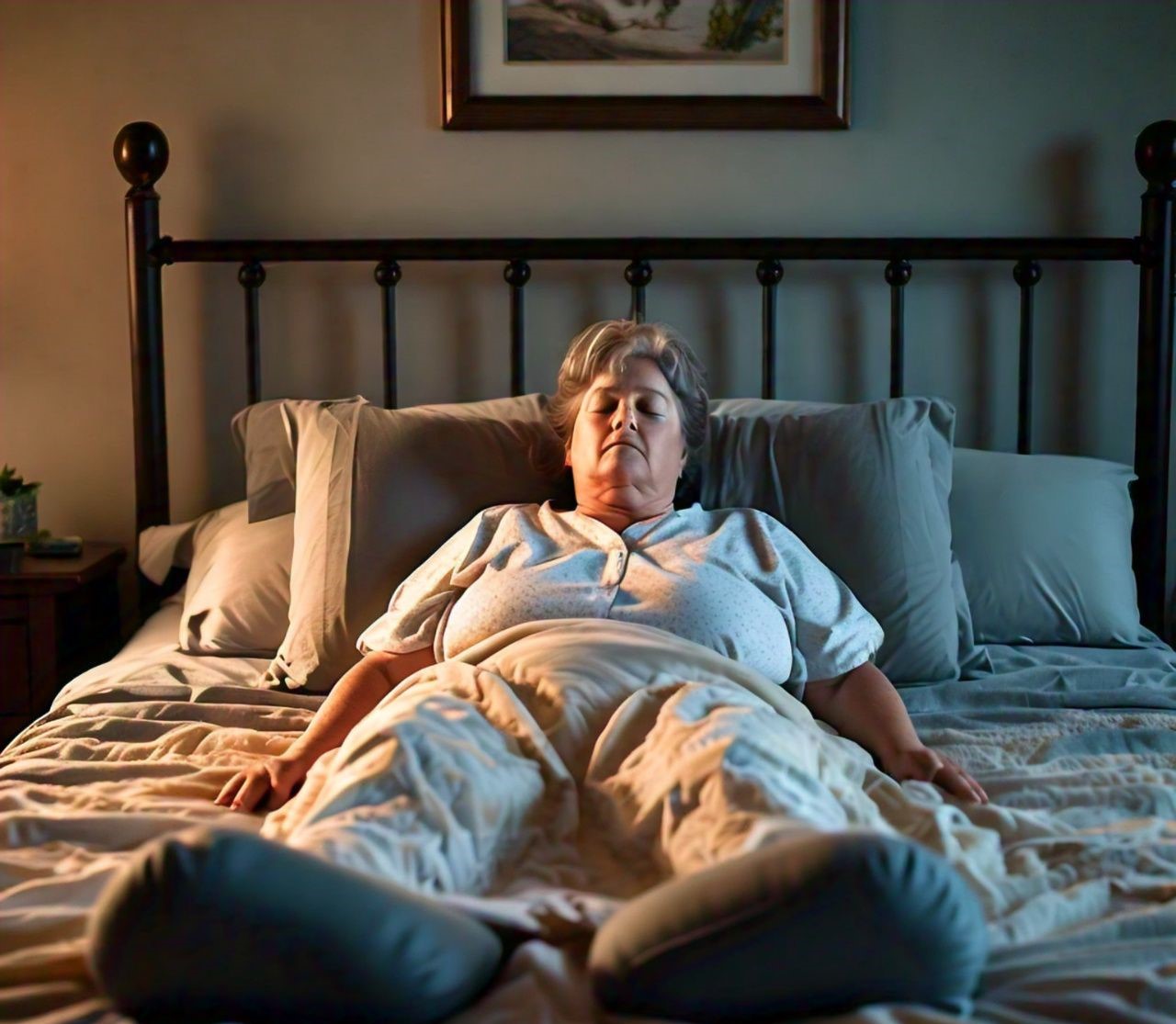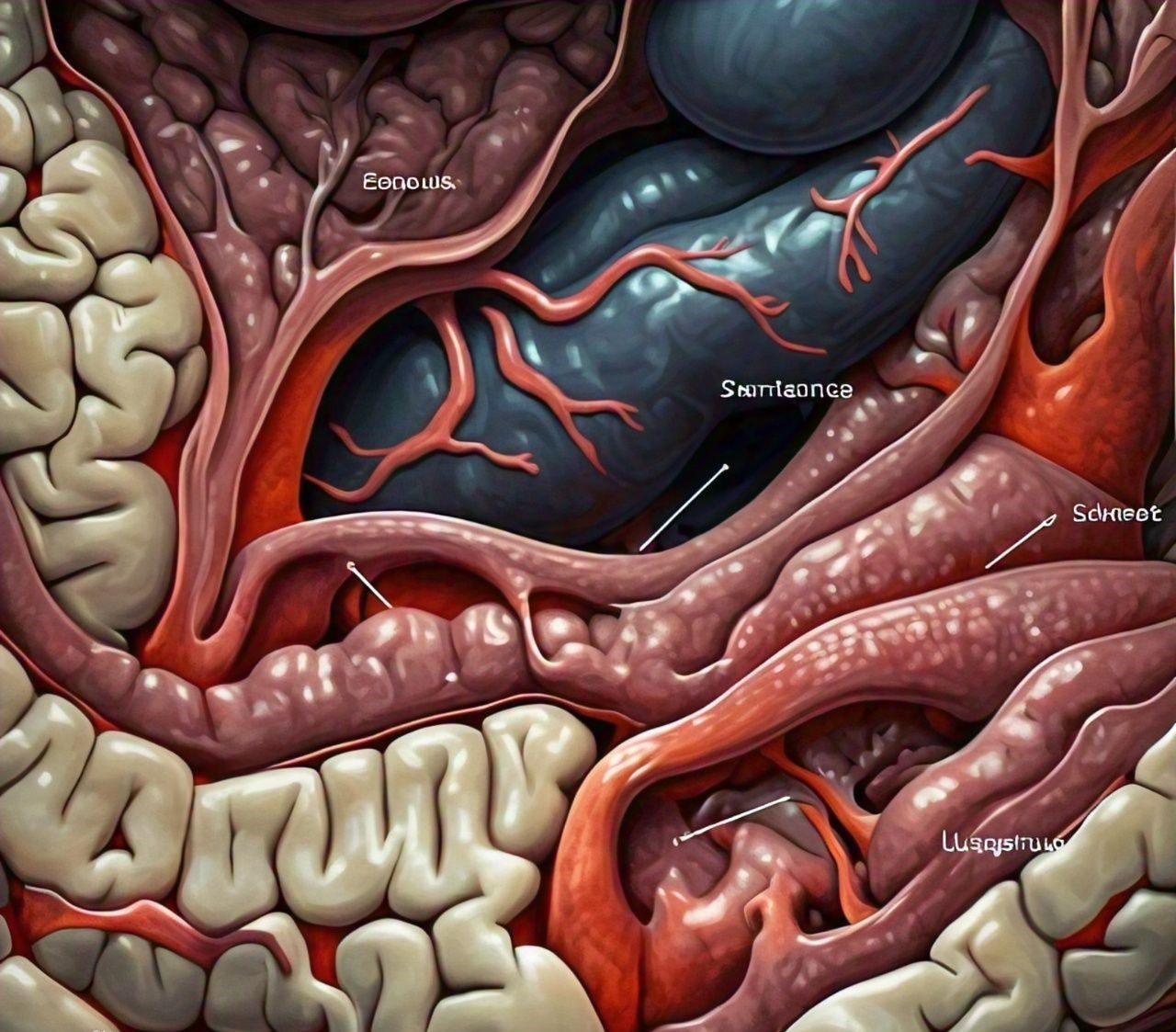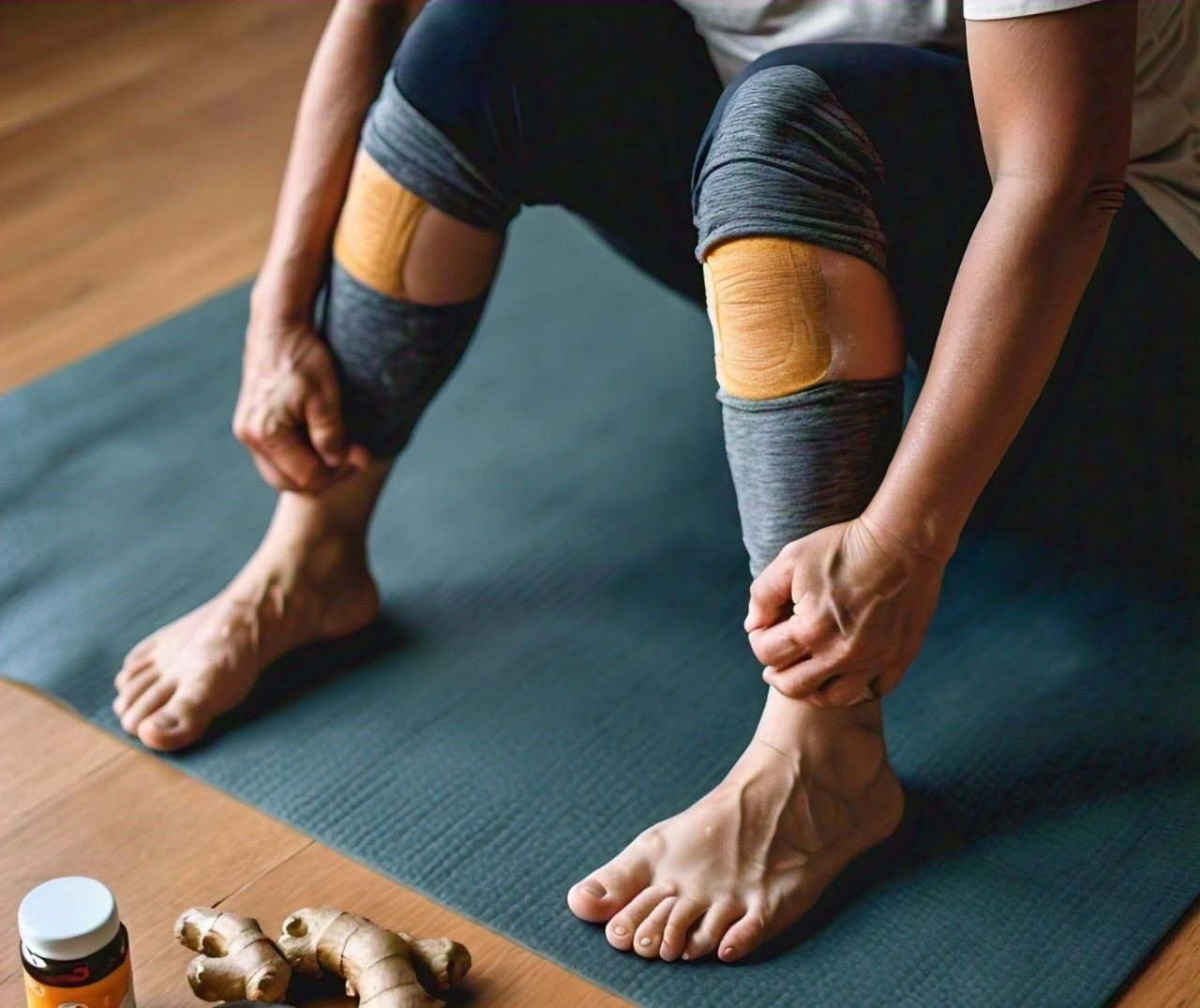Best Sleeping Position for Peripheral Artery Disease
Peripheral Artery Disease (PAD) is a condition characterized by narrowed arteries which reduce blood flow to the limbs. It is a common circulatory problem where plaque builds up in the arteries, causing them to harden and narrow. This can result in symptoms such as leg pain, numbness, and discomfort, especially during walking or physical activity. One crucial aspect of managing PAD is ensuring that you get adequate rest and sleep. The best sleeping position for peripheral artery disease can significantly affect your overall comfort and well-being.
Understanding Peripheral Artery Disease
Before we delve into the best sleeping position for peripheral artery disease, it’s important to understand the condition itself. PAD is often caused by atherosclerosis, where fatty deposits build up on the walls of the arteries. This buildup restricts blood flow, particularly to the legs and feet. Risk factors include smoking, diabetes, high blood pressure, and high cholesterol.
Symptoms of PAD include:
- Leg pain or cramping during activity
- Numbness or weakness in the legs
- Coldness in the lower leg or foot
- Sores on the toes, feet, or legs that won’t heal
- A change in the color of the legs
- Hair loss or slower hair growth on the feet and legs
Given these symptoms, it’s clear that finding the best sleeping position for peripheral artery disease is vital for alleviating discomfort and promoting better circulation.
Why Sleeping Position Matters
Your sleeping position can have a significant impact on your blood circulation. Poor circulation can exacerbate the symptoms of PAD, leading to more discomfort and interrupted sleep. Therefore, adopting the best sleeping position for peripheral artery disease is essential for those affected by this condition.
Best Sleeping Position for Peripheral Artery Disease
When it comes to the best sleeping position for peripheral artery disease, there are several positions that can help improve blood flow and reduce symptoms. Here are the top recommendations:
- Elevate Your Legs
Elevating your legs while sleeping can help improve blood flow back to your heart. This can be achieved by using a pillow or a wedge to prop up your legs. By elevating your legs, you can reduce the pressure on your arteries, thereby improving circulation and reducing the pain and discomfort associated with PAD.
- Sleep on Your Back
Sleeping on your back is generally recommended for individuals with PAD. This position helps keep the spine aligned and reduces pressure on the arteries in the legs. Placing a pillow under your knees can further enhance comfort and promote better circulation.
- Side Sleeping with a Pillow Between Your Legs
If you prefer sleeping on your side, placing a pillow between your legs can help maintain proper spinal alignment and reduce pressure on your arteries. This position can also help alleviate lower back pain, which is common in individuals with PAD.
- Avoid Sleeping on Your Stomach
Sleeping on your stomach can exacerbate the symptoms of PAD by putting additional pressure on your arteries and reducing blood flow to your limbs. It is generally advised to avoid this position if you have PAD.
Tips for Improving Sleep with Peripheral Artery Disease
In addition to adopting the best sleeping position for peripheral artery disease, here are some tips to improve your overall sleep quality:
- Keep Your Bedroom Cool and Comfortable: A comfortable sleeping environment can significantly improve your sleep quality. Ensure your bedroom is cool, dark, and quiet.
- Use a Comfortable Mattress and Pillows: Investing in a good-quality mattress and pillows can help alleviate discomfort and promote better sleep.
- Practice Good Sleep Hygiene: Establish a regular sleep routine, avoid caffeine and heavy meals before bedtime, and limit screen time in the evening.
- Stay Active: Regular physical activity can improve circulation and reduce the symptoms of PAD. However, consult with your doctor before starting any exercise regimen.
- Manage Stress: Stress can negatively impact your sleep. Practice relaxation techniques such as deep breathing, meditation, or yoga to reduce stress and improve sleep quality.
Medical Treatments and Lifestyle Changes
While finding the best sleeping position for peripheral artery disease is important, it is also crucial to address the underlying condition through medical treatments and lifestyle changes. Here are some common treatments and recommendations:
- Medications: Your doctor may prescribe medications to manage symptoms and prevent complications. These may include cholesterol-lowering drugs, blood pressure medications, or antiplatelet agents.
- Lifestyle Changes: Adopting a healthier lifestyle can significantly improve your symptoms. This includes quitting smoking, maintaining a healthy weight, eating a balanced diet, and managing diabetes and hypertension.
- Exercise: Regular exercise can improve blood flow and reduce symptoms. Walking is particularly beneficial for individuals with PAD.
- Medical Procedures: In severe cases, procedures such as angioplasty or bypass surgery may be necessary to restore blood flow to the affected limbs.
For more information and support on managing peripheral artery disease, consider visiting these reputable websites:
These resources offer valuable information on managing PAD, including tips on lifestyle changes, treatment options, and support networks.
Dietary Considerations for Peripheral Artery Disease
Beyond adopting the best sleeping position for peripheral artery disease, it is crucial to pay attention to your diet. A heart-healthy diet can help manage PAD symptoms and improve overall vascular health. Here are some dietary tips that can complement the benefits of the best sleeping position for peripheral artery disease:
- Focus on Whole Foods: Eating a diet rich in whole foods, such as fruits, vegetables, whole grains, and lean proteins, can support vascular health and reduce inflammation. These foods are high in essential nutrients and antioxidants that can help improve blood flow.
- Limit Saturated and Trans Fats: High intake of saturated and trans fats can contribute to plaque buildup in the arteries. Reducing the consumption of fatty meats, full-fat dairy products, and processed foods can help prevent further arterial blockage.
- Increase Omega-3 Fatty Acids: Omega-3 fatty acids, found in fatty fish like salmon, mackerel, and sardines, have anti-inflammatory properties and can help improve blood vessel function. Incorporating these into your diet can complement the benefits of the best sleeping position for peripheral artery disease.
- Reduce Sodium Intake: High sodium intake can raise blood pressure, exacerbating PAD symptoms. Opt for low-sodium alternatives and limit the use of table salt to help manage blood pressure levels.
- Stay Hydrated: Proper hydration is essential for maintaining healthy blood flow. Drinking adequate water throughout the day can support vascular health and complement the benefits of the best sleeping position for peripheral artery disease.
Importance of Regular Check-Ups
Regular medical check-ups are crucial for managing peripheral artery disease. These appointments allow your healthcare provider to monitor your condition, adjust treatments, and provide guidance on lifestyle modifications. Discussing your sleeping habits and exploring the best sleeping position for peripheral artery disease with your doctor can lead to personalized recommendations tailored to your needs.
Incorporating Physical Therapy
Physical therapy can be an effective way to manage PAD symptoms and improve circulation. A physical therapist can design a customized exercise program that addresses your specific needs. These exercises can enhance blood flow, reduce pain, and improve overall mobility. Combining physical therapy with the best sleeping position for peripheral artery disease can lead to significant improvements in your quality of life.
Psychological Impact of Peripheral Artery Disease
Living with PAD can be challenging, both physically and emotionally. The pain and discomfort associated with the condition can affect your mental well-being. Adopting the best sleeping position for peripheral artery disease can help alleviate physical symptoms, but it is also important to address the psychological impact. Here are some strategies to support your mental health:
- Seek Support: Connecting with others who have PAD or joining a support group can provide emotional support and practical advice. Sharing experiences and coping strategies can help you feel less isolated.
- Practice Mindfulness: Mindfulness techniques, such as meditation and deep breathing exercises, can help reduce stress and improve your mental well-being. These practices can be particularly beneficial when dealing with the daily challenges of PAD.
- Consult a Mental Health Professional: If you find it difficult to cope with the emotional aspects of PAD, seeking help from a mental health professional can provide valuable support and guidance. Therapy can help you develop coping strategies and manage stress more effectively.
Adapting Your Environment
Creating a supportive environment at home can enhance the benefits of the best sleeping position for peripheral artery disease. Here are some tips for adapting your environment:
- Invest in Adjustable Furniture: Adjustable beds and recliners can help you find the best sleeping position for peripheral artery disease more easily. These pieces of furniture allow you to elevate your legs and adjust your sleeping position to improve comfort and circulation.
- Use Compression Garments: Compression socks or stockings can help improve blood flow and reduce swelling in the legs. Wearing these during the day can complement the benefits of the best sleeping position for peripheral artery disease at night.
- Ensure a Safe Sleep Environment: Make sure your bedroom is free of obstacles that could cause falls or injuries. Adequate lighting, non-slip rugs, and clear pathways can help create a safe and comfortable sleep environment.
Combining Sleep Position with Other Treatments
While adopting the best sleeping position for peripheral artery disease is crucial, combining this with other treatments can lead to better outcomes. Here are some complementary treatments to consider:
- Medication Adherence: Taking prescribed medications as directed by your healthcare provider is essential for managing PAD. Medications can help control symptoms, prevent complications, and improve overall vascular health.
- Regular Exercise: Incorporating regular physical activity into your routine can enhance blood flow and reduce symptoms. Walking, cycling, and swimming are excellent low-impact exercises that can complement the benefits of the best sleeping position for peripheral artery disease.
- Dietary Modifications: As mentioned earlier, a heart-healthy diet can support vascular health and improve PAD symptoms. Combining dietary changes with the best sleeping position for peripheral artery disease can provide comprehensive benefits.
Monitoring Progress and Making Adjustments
It’s important to monitor your progress and make necessary adjustments to your lifestyle and treatment plan. Keeping a journal to track your symptoms, sleep patterns, and responses to different sleeping positions can help you and your healthcare provider identify what works best for you. Regularly reviewing and adjusting your approach can lead to sustained improvements in managing peripheral artery disease.
Conclusion
Finding the best sleeping position for peripheral artery disease is a critical component of managing this condition and improving your quality of life. Elevating your legs, sleeping on your back, and using supportive pillows are effective strategies to enhance blood flow and reduce symptoms. Alongside adopting the best sleeping position for peripheral artery disease, incorporating dietary changes, regular exercise, and stress management techniques can provide comprehensive benefits.
Remember, managing PAD requires a multifaceted approach that includes medical treatment, lifestyle modifications, and adopting the best sleeping position for peripheral artery disease. Regular check-ups with your healthcare provider, physical therapy, and mental health support are also essential components of a holistic management plan. By taking proactive steps and making informed choices, you can significantly improve your overall well-being and quality of life while living with peripheral artery disease.
For more information on fitness and health, check out these resources:
Explore more articles on our site:
- How to Increase Running Stamina for Beginners at Home
- What Happens if You Don’t Get Enough Sleep Consistently: Effects and Solutions
- The Ultimate Guide to Healthy Living in 2024
- The Future of Artificial Intelligence: What to Expect
- Unlocking the Potential of Chat GPT Software: Revolutionizing AI Conversations
- Best Sleeping Position for Peripheral Artery Disease [New 2024]
- How to Increase Running Stamina for Beginners at Home
- 5 New Inner Thigh Exercises for Men and Women





I found this post incredibly helpful. The step-by-step approach you’ve taken is very useful, and I’ve learned a lot that I can apply to my own projects.
I found this post incredibly helpful. The step-by-step approach you’ve taken is very useful, and I’ve learned a lot that I can apply to my own projects.
Excellent tips! I’ll definitely use these.
Thank you for this informative and engaging article. The examples you’ve provided make it much easier to understand the concepts you’re discussing.
NP